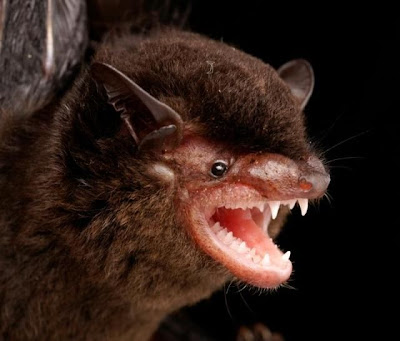"THE EVERGLADES."
My experience in the Online World began in 2005 when hubby acquired his PC, and I joined Christian American Poetry Forums. The invested time I put behind the screen has been certainly rewarding since I have met many wonderful Online friends worldwide, and we are still in touch no matter where I go. It has already been another blessing for me to meet you all in Blogland after 2009.
I pray we remain in touch as long as you wish. I'll be round the corner in just an Email away.
One of my personal friends asked me to write a post with an interesting topic about "The Everglades." So, this is today's post: "The Everglades."
Wait and see, I let you all know that it is coming up sometimes this day...
The snake was found in the Everglades National Park, measuring over 17 feet, and over 165 pounds. The other record was the fact that the snake was pregnant with 87 eggs.
There is believed to be thousands of snakes like that one thriving the moist, hot climate of the Everglades, perhaps their ancestors released them many years ago by pet owners, or from pet shops during Hurricane Andrew in 1992, or ever before that.
Local ordinances prohibit the import of these reptiles, and allowing them to be hunted has not put much on population control. They have the ability to swallow large whole animals, after coiling around their prey and slowly suffocating them to death.
The Everglades are a natural region of subtropical wetlands in the southern portion of the U.S. state of Florida, comprising the southern half of a large watershed. The system begins near Orlando with the Kissimmee River, which discharges into the vast, but shallow Lake Okeechobee. Water leaving the lake in the wet season forms a slow-moving river -60 miles (97 km) wide, and over 100 miles (160 km) long, flowing southward across a limestone shelf to Florida Bay at the southern end of the state.
SOME HISTORY...
Human habitation in the southern portion of the Florida peninsula dates to 15,000 years ago. Two major tribes eventually formed in and around Everglades ecosystems: the Calusa and the Tequesta. After coming into contact with the Spanish in the late 16th century, both tribes declined gradually during the following two centuries. The Seminoles, a tribe of Creeks who assimilated other people into their own, made their living in the Everglades region after being forced there by the U.S. Military in the Seminole Wars of the 19th century.
Draining the Everglades was first suggested in 1848, but was not attempted until 1882. Canals were constructed throughout the first half of the 20th century, and spurred the South Florida economy, prompting land development. However, problems with canals and floods caused by hurricanes forced engineers to rethink their drainage plans.
The South Florida metropolitan area grew substantially and Everglades water was diverted to cities. When the construction of a large airport was proposed 6 miles (9.7 km) north of Everglades National Park, an environmental study predicted it would destroy the South Florida ecosystem. Restoring the Everglades then became a priority.
National and International attention turned to the environment in the 1970's, and designated the Everglades as one of only three wetland areas of global importance, like the one in The Amazon Rainforest in South America.
The water quality of Lake Okeechobee, a water source for South Florida, became a significant concern. The deterioration of the environment was also linked to the diminishing quality of life in South Florida's urban areas. In 2000, a plan to restore the Everglades was approved by Congress; to date, it is the most expensive and comprehensive environmental repair attempt in History.
The Everglades are a complex system of interdependent ecosystems described as a "River of Grass."
The Everglades, prior to drainage, was a web of marshes and prairies 4,000 square miles
(10,000 km2) in size. The primary feature of the Everglades is the sawgrass marsh. The shallow river 100 miles long and 60 miles wide from Lake Okeechobee to Florida Bay is often referred to as the "true Everglades" or just "the Glades". Prior to the first drainage attempts in 1905, it occupied nearly a third of the lower Florida peninsula. Alligators choose these locations for nesting, huge snakes, bats, periphytons and other creatures grow.
NATIVE AMERICANS...
People arrived in the Florida peninsula approximately 15,000 years ago. Paleo-Indians came to Florida probably following large game that include giant sloths, saber-toothed cats, and spectacled bears. They found an arid landscape that supported plants and animals adapted for desert conditions. However, 6,500 years ago, climate changes brought a wetter landscape; large animals became extinct in Florida, and the Paleo-Indians slowly adapted and became the Archaic people.
During the late Archaic period, the climate became wetter again, and approximately 3,000 BCE the rise of water tables allowed an increase in population and cultural activity. Florida Indians developed into three distinct but similar cultures that were name for the bodies of water near where they were located: Okeechobee, Caloosahatchee, and Glades.
From the Glades people, two major tribes emerged in the area: the Calusa and the Tequesta. The Calusa was the largest and most powerful tribe in South Florida. The Calusa were hunter-gatherers who existed on small game, fish, turtles, alligators, shellfish, and various plants. Calusa weapons consisted of bows and arrows. Canoes were used for transportation, and South Florida tribes often canoed through the Everglades, but rarely lived in them. Canoe trips to Cuba were also common.
Second in power and number to the Calusa in South Florida were the Tequesta. They occupied the southeastern portion of the lower peninsula in modern-day Dade and Broward Counties. Like the Calusa, the Tequesta societies centered around the mouths of rivers. Their main village was probably on the Miami River or Little River. They were greatly feared by sailors who suspected them of torturing and killing survivors of shipwrecks.
Common description of Native Americans in Florida by 1820 used only the term "Seminoles".
Seminoles made their home in the Everglades.
Native Americans in Southern Florida were referred to as "Spanish Indians" in the 1740's, probably due to their friendlier relations with Spain.
They made a living by hunting and trading with white settlers, and raised domesticated animals.
In 1817, Andrew Jackson invaded Florida to hasten its annexation to the United States, in what became known as the First Seminole War. Florida became a U.S. Territory in 1821, conflicts between settlers and Seminoles increased. Between the end of the last Seminole War and 1930, the tribe lived in relative isolation. The construction of the Tamiami Trail, beginning in 1928 and spanning from Tampa to Miami, altered their ways of life. They began to work in local farms, ranches, and souvenir stands. As metropolitan areas in South Florida began to grow, the Seminoles became closely associated with the Everglades, simultaneously seeking privacy and serving as a tourist attraction, wrestling alligators and selling craftworks. As of 2008, there were six Seminole Reservations throughout Florida.
FUTURE OF THE EVERGLADES...
In May 2010, 5.5 miles (8.9 km) of bridges were proposed to be added to the Tamiami Trail. Governor Charlie Crist announced the same month that $50 Million Dollars of State Funds would be earmarked for the Everglades Restoration.
The Everglades Pseudoatoll (also called a pseudo-atoll) was a major geomorphic feature of Southern Florida during the Pliocene epoch.
The Everglades Pseudoatoll began its growth during the early Eocene as a paleodepression possibly created by an asteroid impact upon the carbonate Florida Platform at the southern part of the Everglades National Park. The pseudo-atoll is surrounded by a raised rim. Its growth as a reef system and pseudo-atoll began during the Oligocene reaching its maximum size of 330 km (210 miles) north to south during the Piacenzian of the late Pliocene.
The Everglades Pseudoatoll was a U-shaped asymmetrical system of reefs that surrounded the Okeechobean Sea, not unlike South Pacific atolls surrounded by a central lagoon. The west side was more developed than the east and south.
On the western side of this pseudo-atoll lay the Immokalee Reef Tract and chain of islands called the Immokalee Archipelago. The large Hendry Platform lay behind the reef on the east. Mangrove forests extended southwesterly of the pseudoatoll along what would be the southwestern Florida coast. To the northwest was the Myakka Lagoon System, a tropical estuary of brackish water. On the east lay the Miami-Palm Beach Reef Tract with narrow reef. Between the west and east was the wide and very deep 100 meter (330 feet) lagoon known as the Loxahatchee Trough. The northern part of the pseudo-atoll was the Kissimmee Embayment which was lined with mud flats and jungles of mangrove.
CHRONOLOGY.
The pseudo-atoll's chronology is developed from deposition of a variety of community organisms. The oldest are the early Piacenzian communities of shallow intertidal muddy-sand Community of clam species, the deep lagoon Community of scallops, the shallow lagoon Community of tower shell snails, and lagoon coral Community.
The second time period is mid-Piacenzian and contains the shallow muddy intertidal Communities, lagoon scallop, and the shallow lagoon Community of foam oysters.
The third time period is the late Piacenzian and contained wave-action related coral zones of open ocean to sheltered basin. The communities are the high energy open ocean Community of the coral reef crest.
The fourth was during the maximum development of the Myakka Lagoon System estuary and included the mudflat mangrove forests, and the shallow and muddy lagoon clam beds Community. Later the shallow lagoon mussel shoals Community developed.
The Kissimmee Embayment contained the shallow mangrove forests and mudflat Community of sea snails and sand flats and turtle grass Community.
If you ever decide to take a Tour to The Everglades, just Be Careful!
THANK YOU IN ADVANCE FOR READING!
HAVE A BLESSED TIME!
STARRY DAWN.
















2 comments:
You have a mighty big variety here girl. Snakes - alligators - etc.
I think what I like is that heart cup on top - would love to find that.
sandie
Hi Sandie,
Thank you for visiting my posts!
I am sorry that you don't like the images in there. I don't like those creatures either, especially in my backyard...
I teach about "The Everglades" in Southern Florida, because it is a great natural environment that should be protected.
I also like the heart shaped red cup for a good afternoon tea.
Have a great week, Sandie!
Welcome Aboard at Anytime!
Blessings,
Starry.
Post a Comment